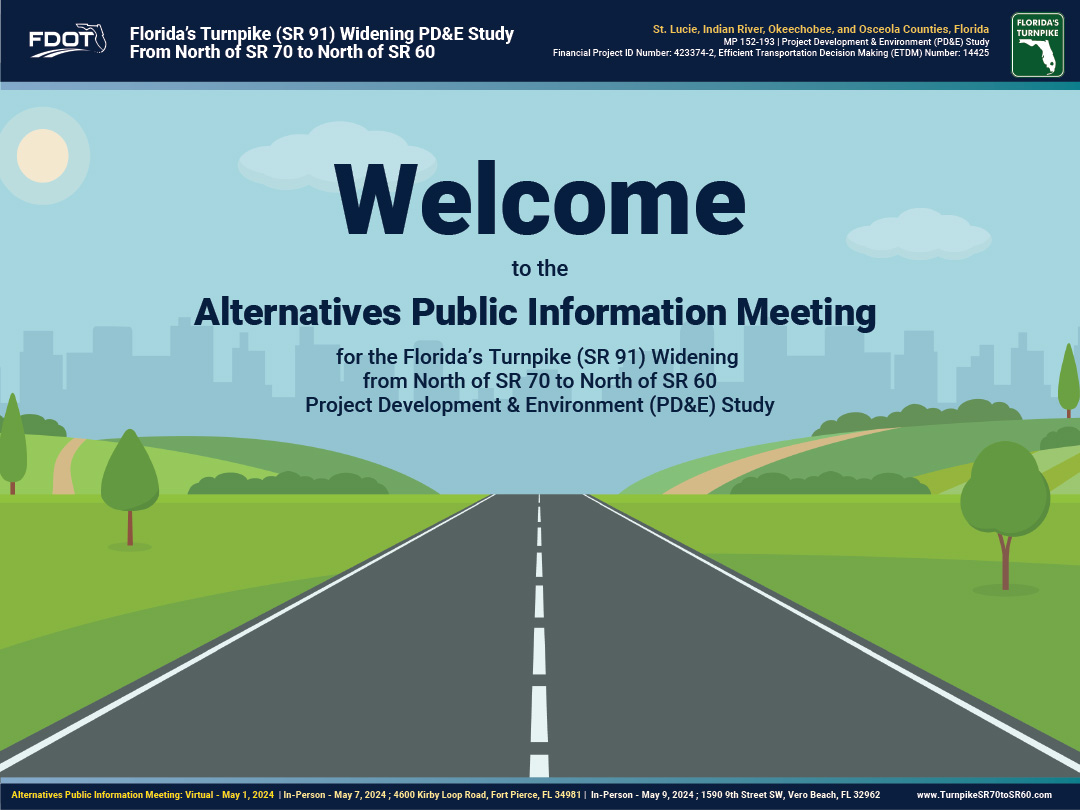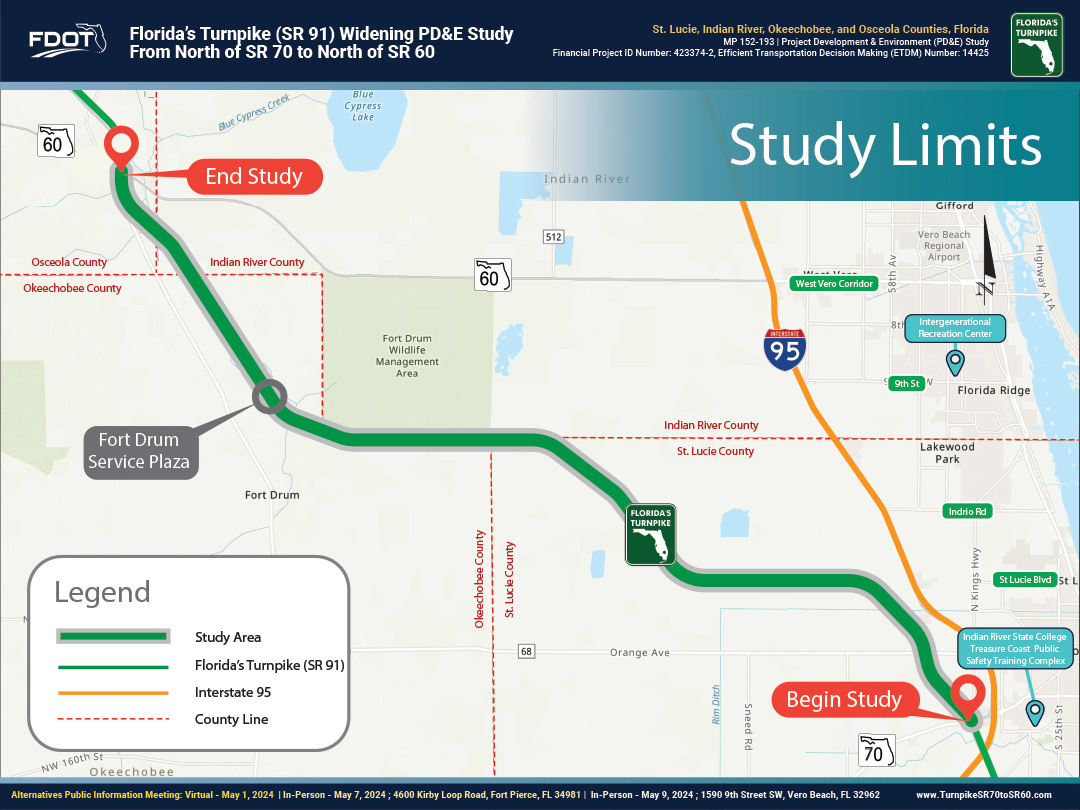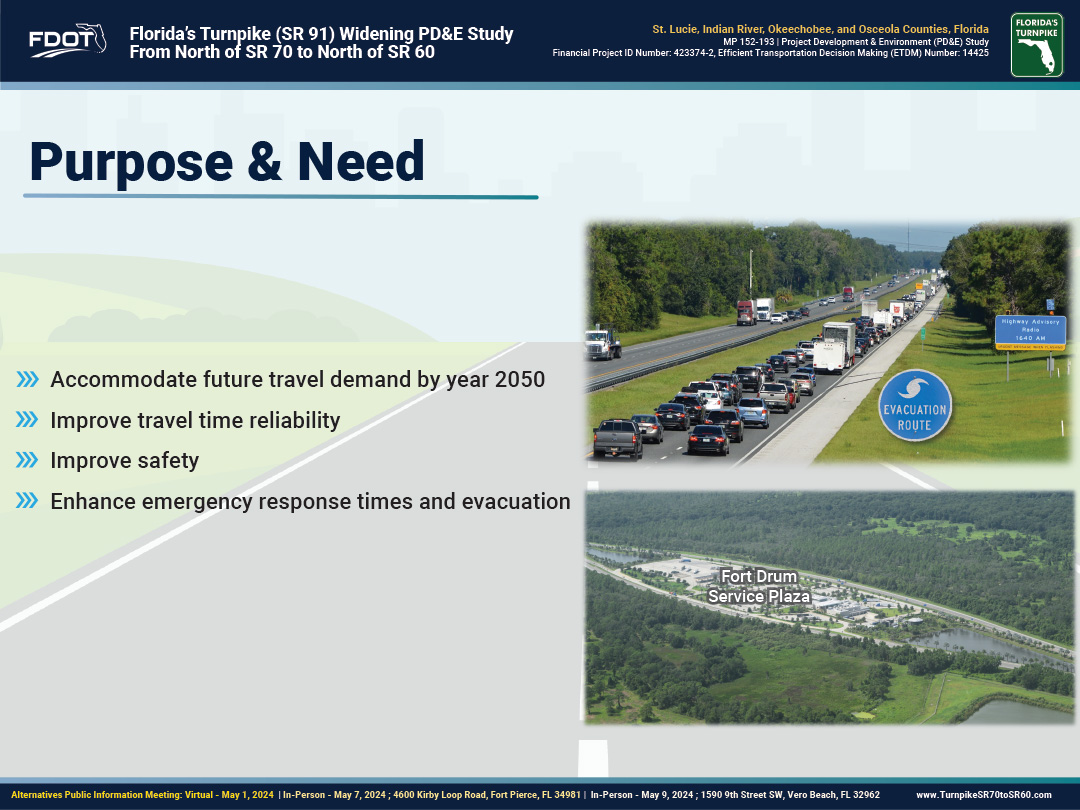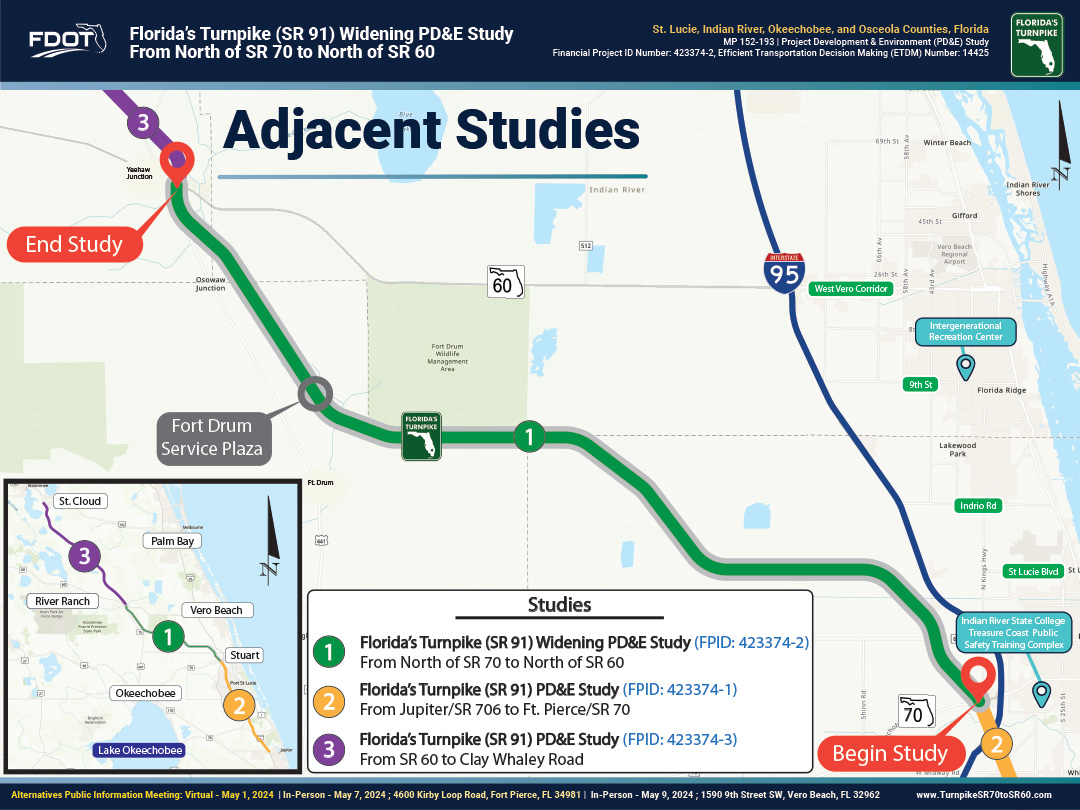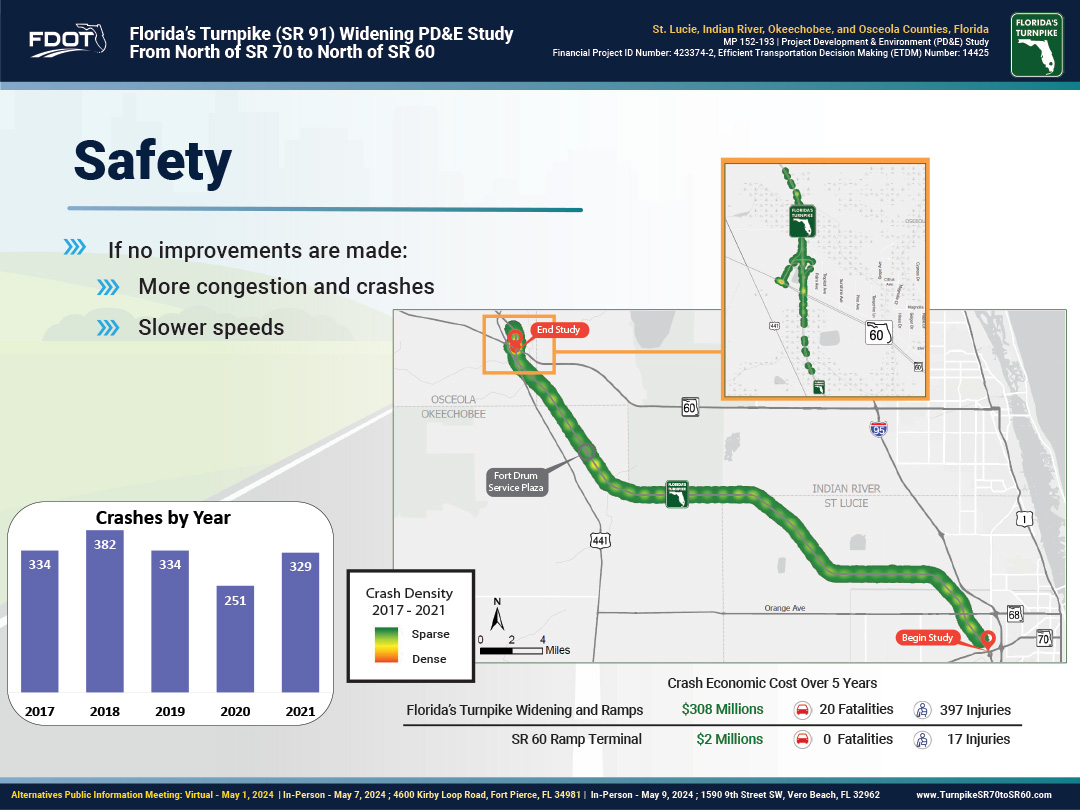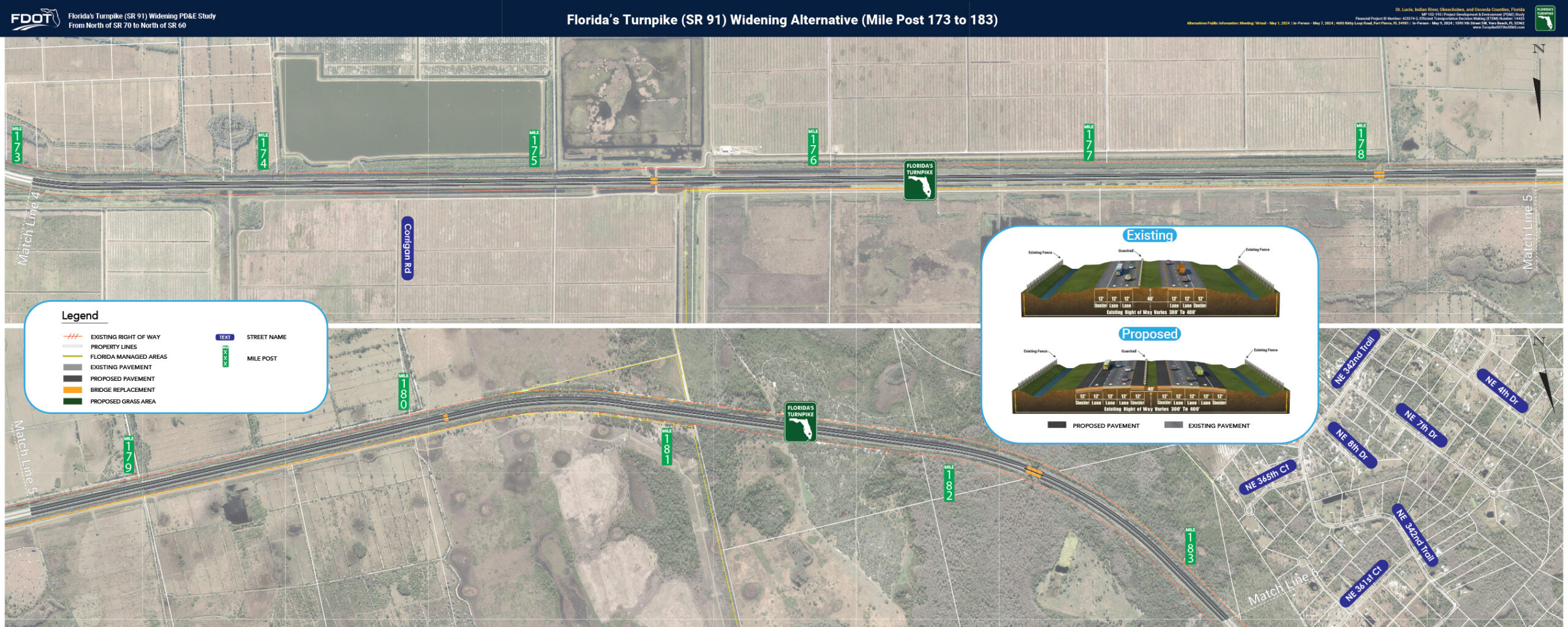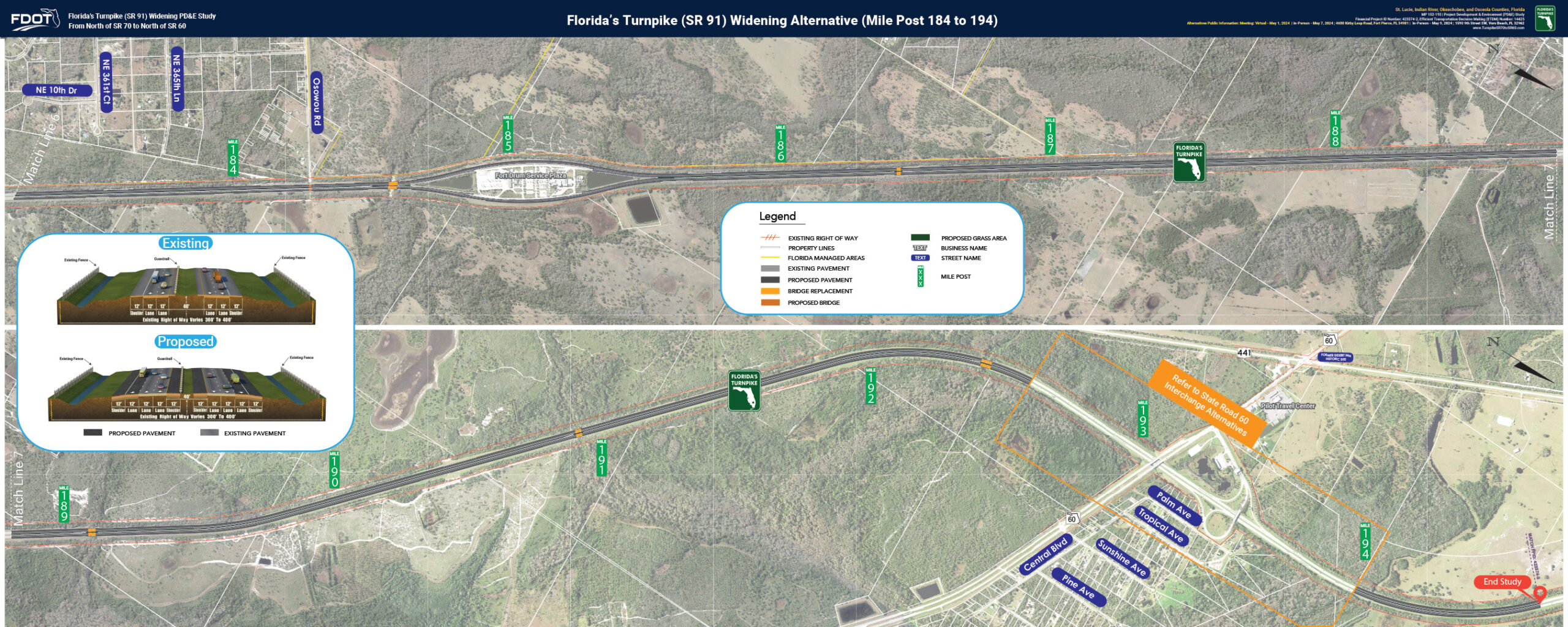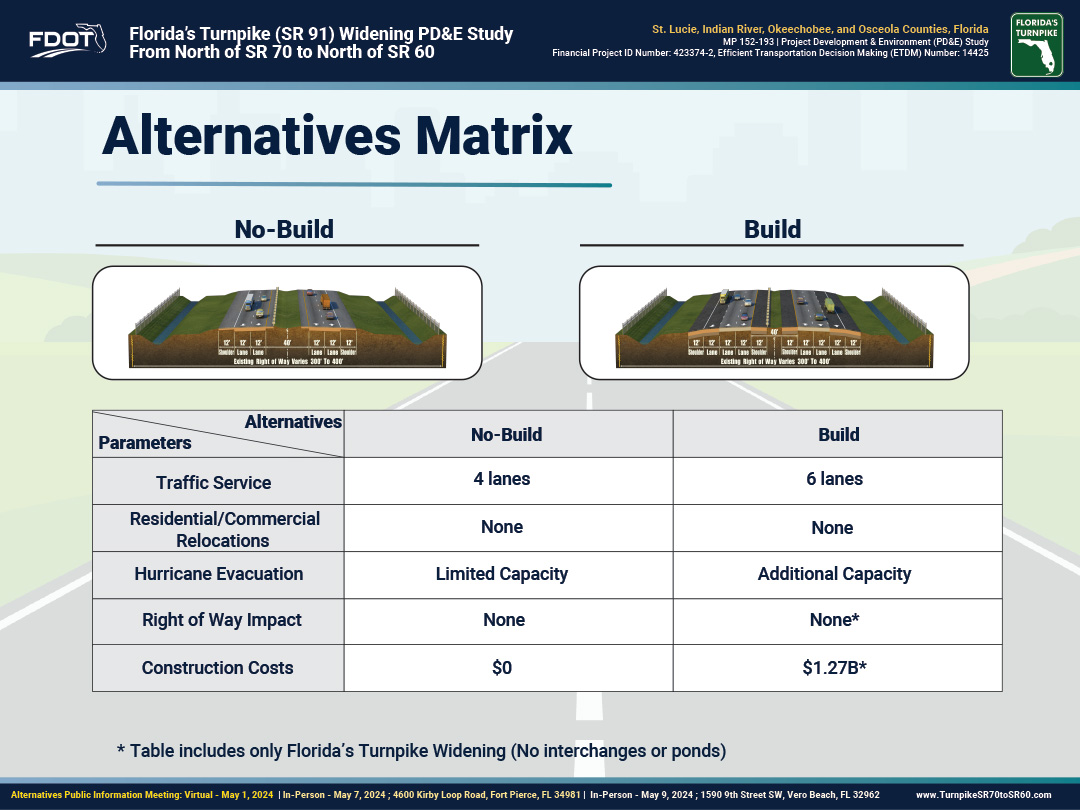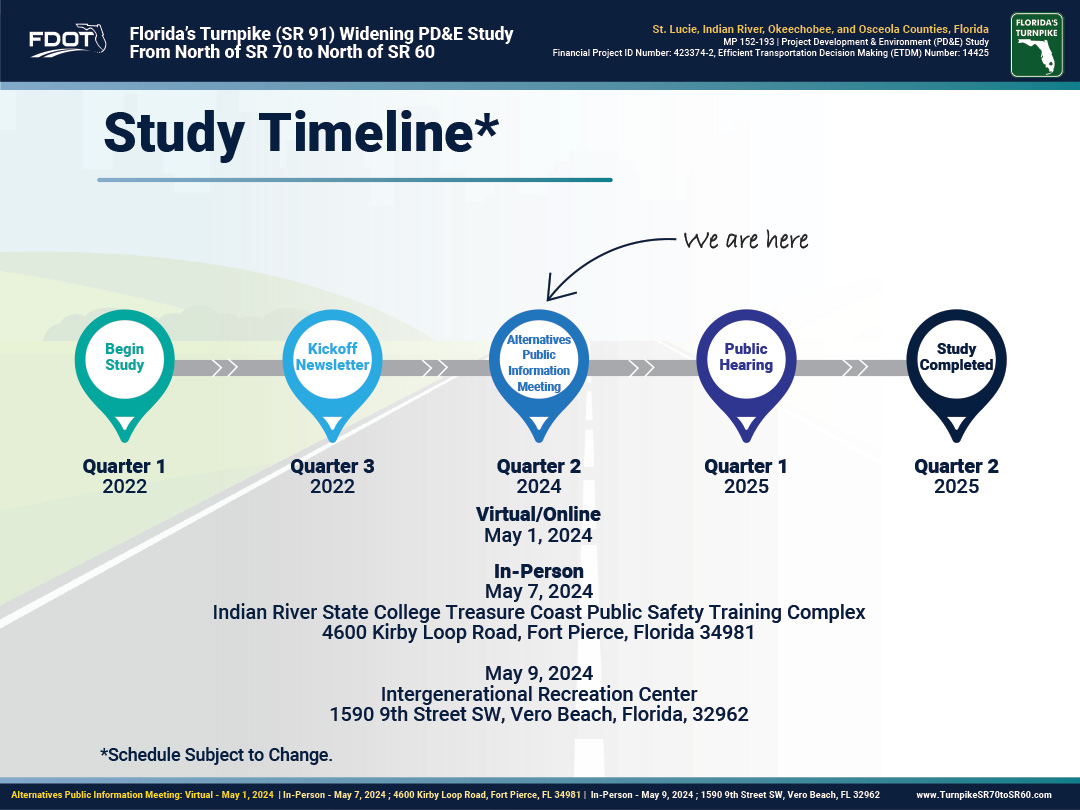WELCOME!
The Florida’s Turnpike Enterprise appreciates your interest in this project. Please use the navigation menu to view display boards. Clicking on the graphic will enlarge the view. The display boards are available for download on the main project website under the Documents section. If you wish to submit comments, please use the comment form below.

